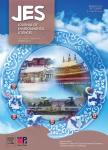Anaerobic digestion in mesophilic and room temperature conditions: Digestion performance and soil-borne pathogen survival
Anaerobic digestion in mesophilic and room temperature conditions: Digestion performance and soil-borne pathogen survival作者机构:Laboratory of Environmental Microbiology College of Life Sciences Nanjing Agricultural University Laboratory for Agricultural Wastes Treatment and Recycling Institute of Agricultural Resources and Environment Jiangsu Academy of Agricultural Science East China Scientific Observing and Experimental Station of Development and Utilization of Rural Renewable Energy Ministry of Agriculture
出 版 物:《Journal of Environmental Sciences》 (环境科学学报(英文版))
年 卷 期:2016年第28卷第5期
页 面:224-233页
核心收录:
学科分类:0830[工学-环境科学与工程(可授工学、理学、农学学位)] 09[农学] 0904[农学-植物保护] 090401[农学-植物病理学]
基 金:supported by the Special Fund for Agro-scientific Research in the Public Interest (No. 201503135-17)
主 题:Anaerobic digestion Pathogen inactivation Digestion performance Fruit and vegetable wastes
摘 要:Tomato plant waste(TPW) was used as the feedstock of a batch anaerobic reactor to evaluate the effect of anaerobic digestion on Ralstonia solanacearum and Phytophthora capsici survival. Batch experiments were carried out for TS(total solid) concentrations of 2%, 4% and 6% respectively, at mesophilic(37 ± 1°C) and room(20–25°C) temperatures. Results showed that higher digestion performance was achieved under mesophilic digestion temperature and lower TS concentration conditions. The biogas production ranged from 71 to 416 L/kg VS(volatile solids). The inactivation of anaerobic digestion tended to increase as digestion performance improved. The maximum log copies reduction of R. solanacearum and P. capsici detected by quantitative PCR(polymerase chain reaction) were 3.80 and 4.08 respectively in reactors with 4% TS concentration at mesophilic temperatures. However, both in mesophilic and room temperature conditions, the lowest reduction of R. solanacearum was found in the reactors with 6% TS concentration, which possessed the highest VFA(volatile fatty acid) concentration. These findings indicated that simple accumulation of VFAs failed to restrain R. solanacearum effectively, although the VFAs were considered poisonous. P. capsici was nearly completely dead under all conditions. Based on the digestion performance and the pathogen survival rate, a model was established to evaluate the digestate biosafety.



